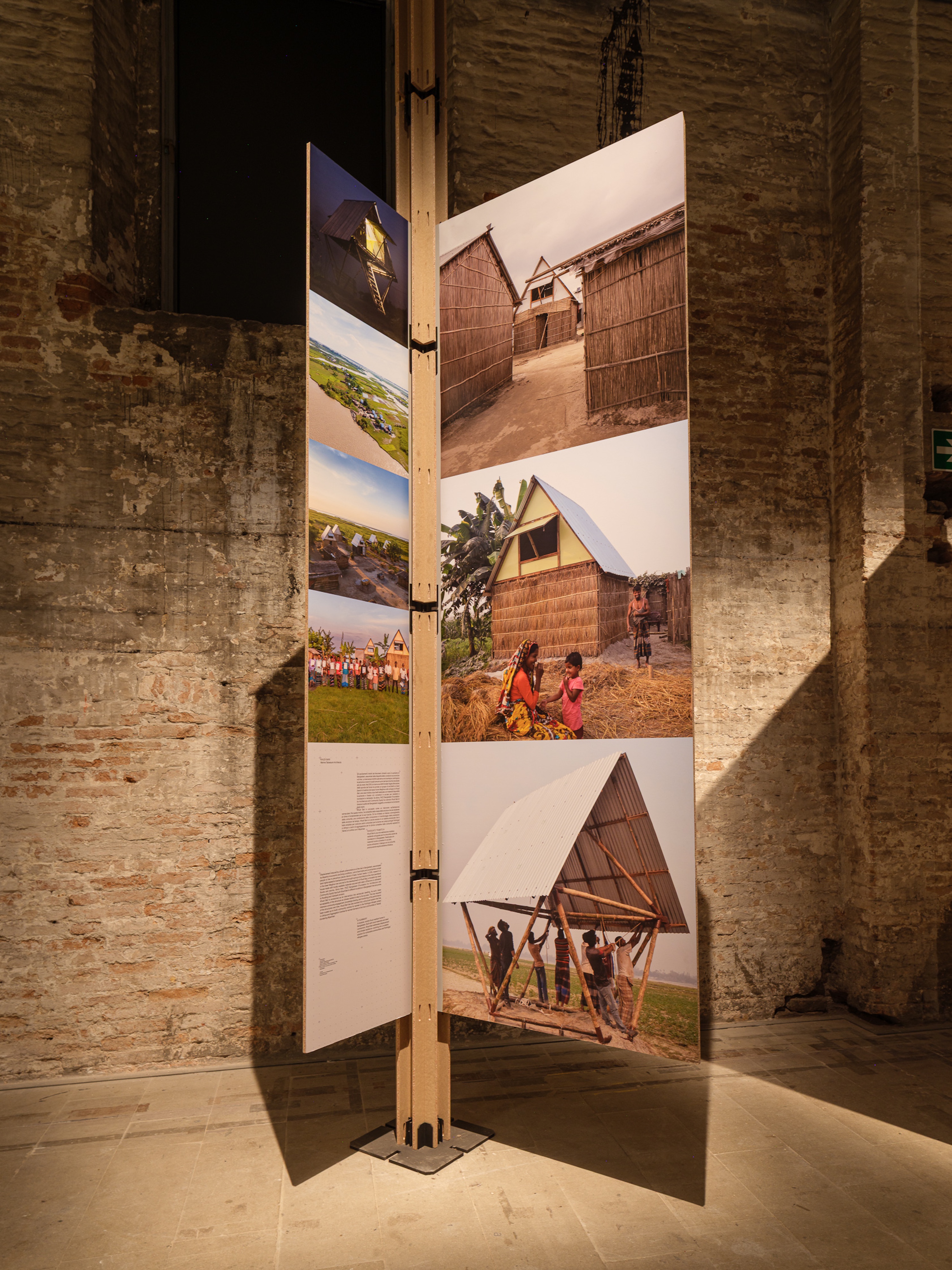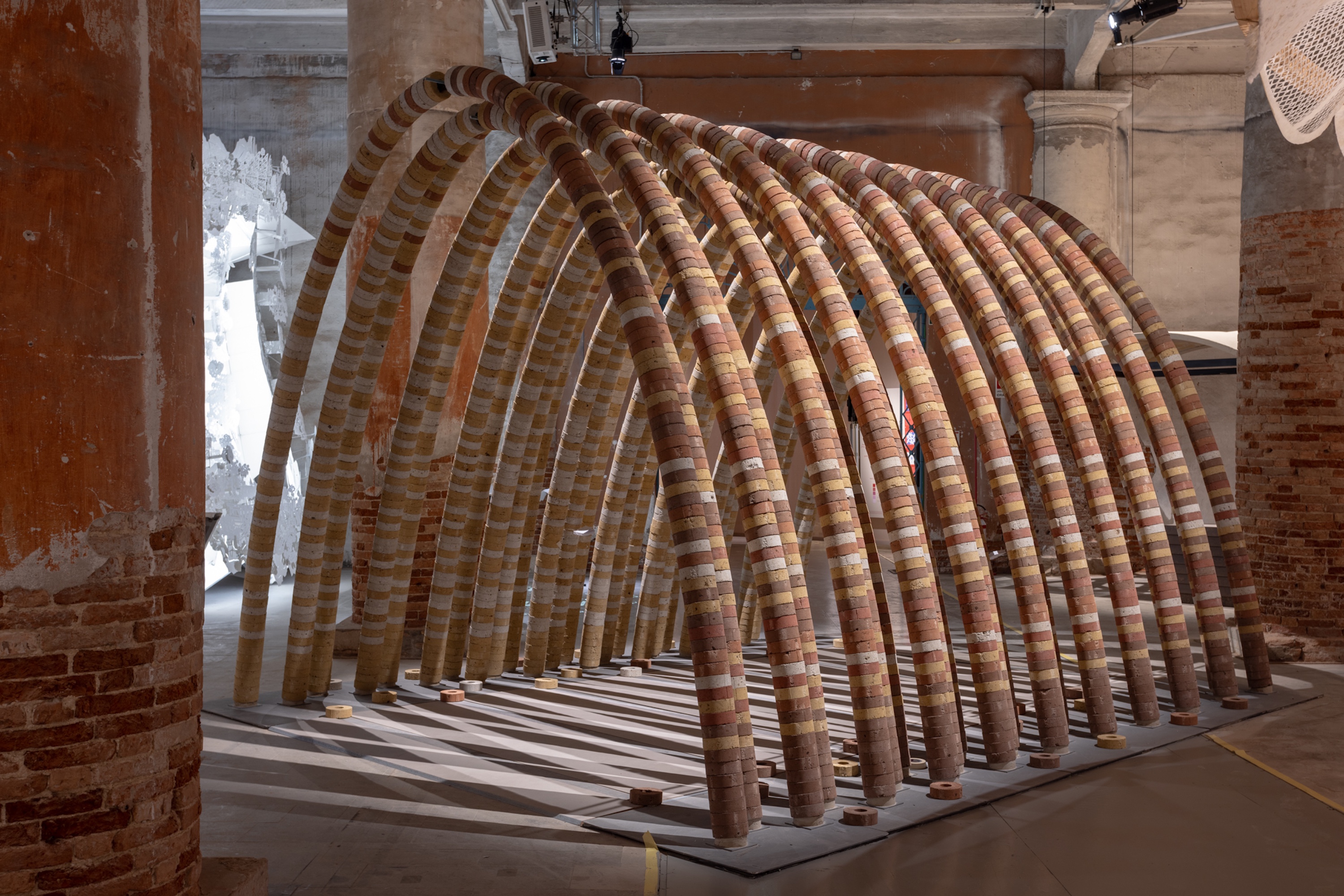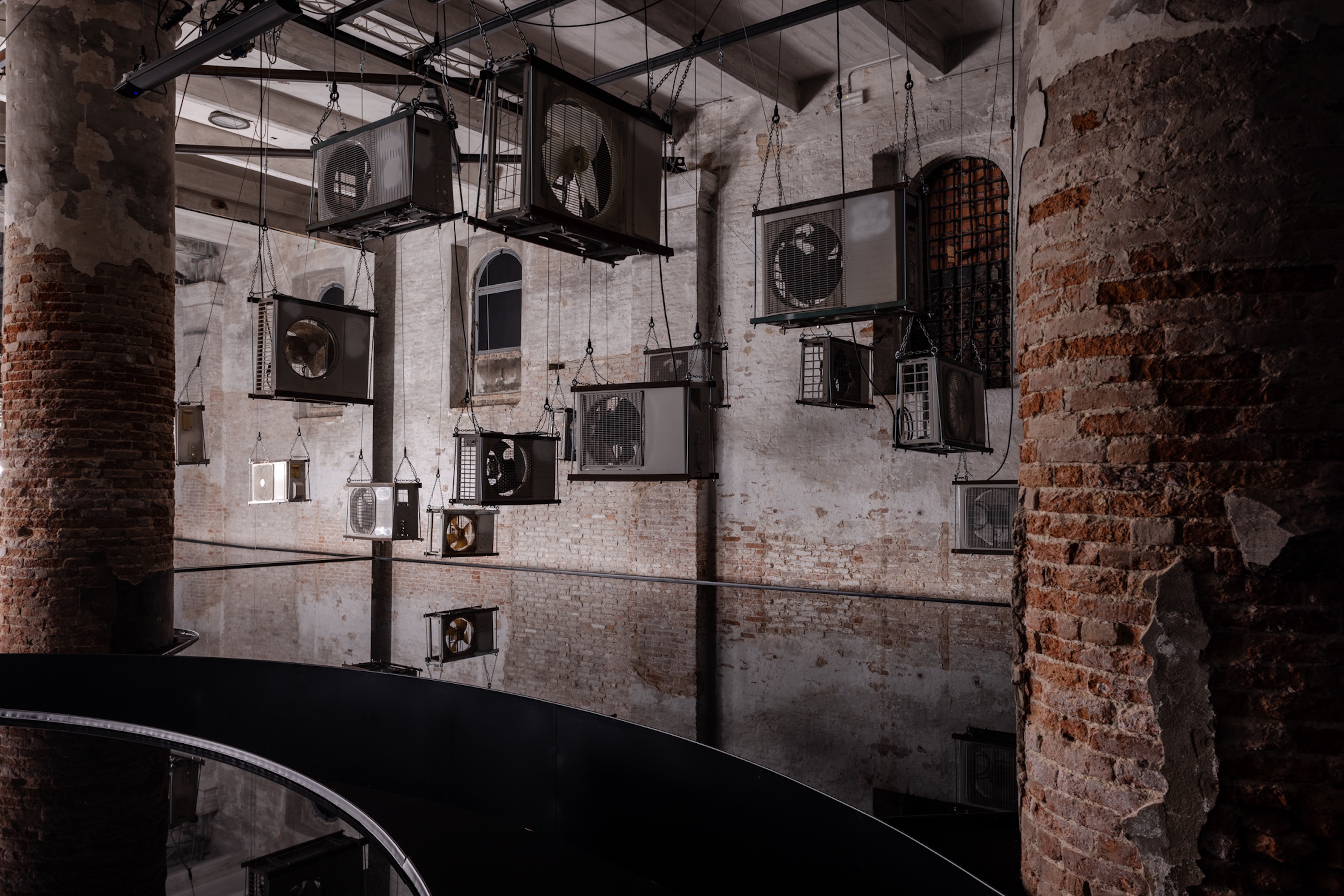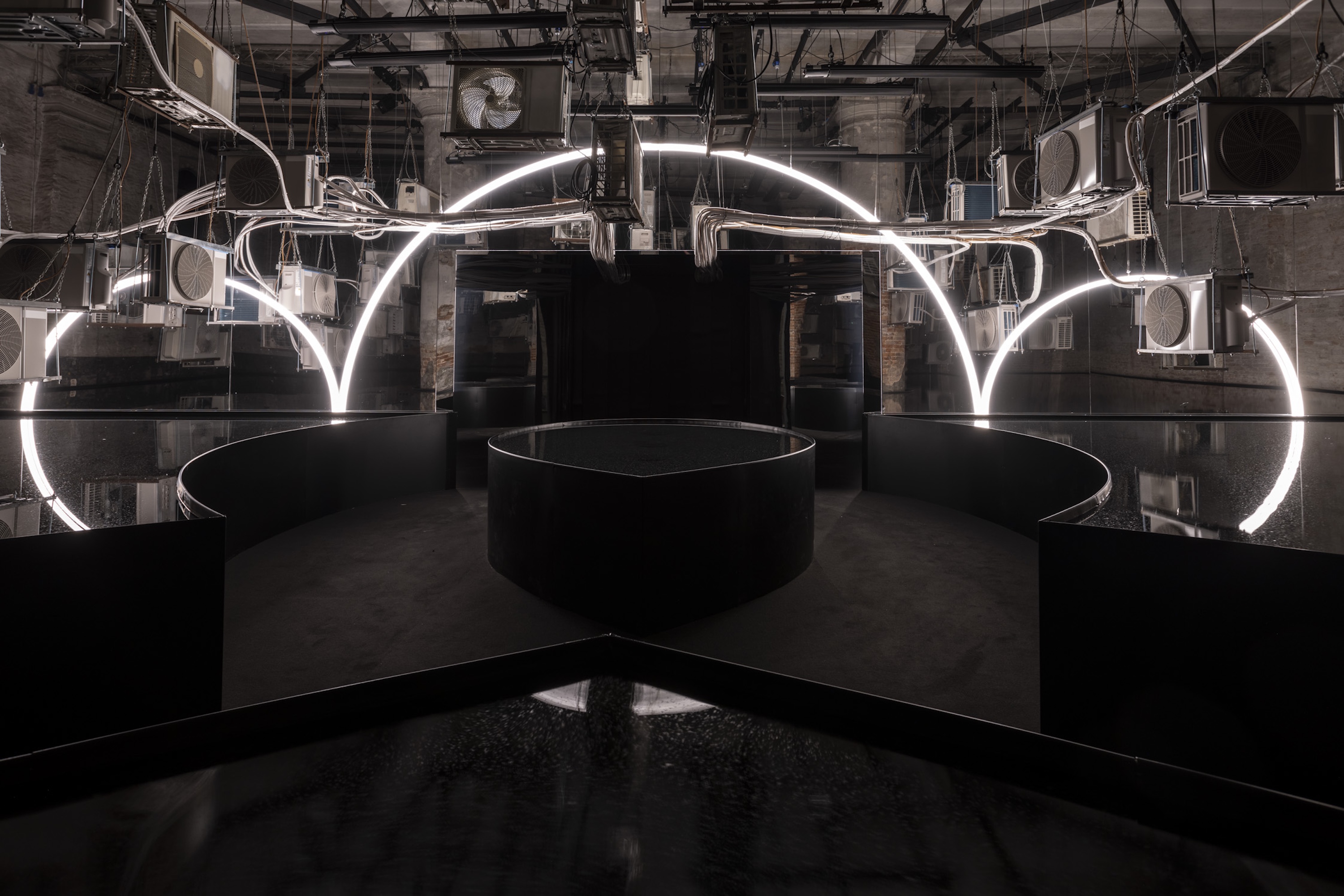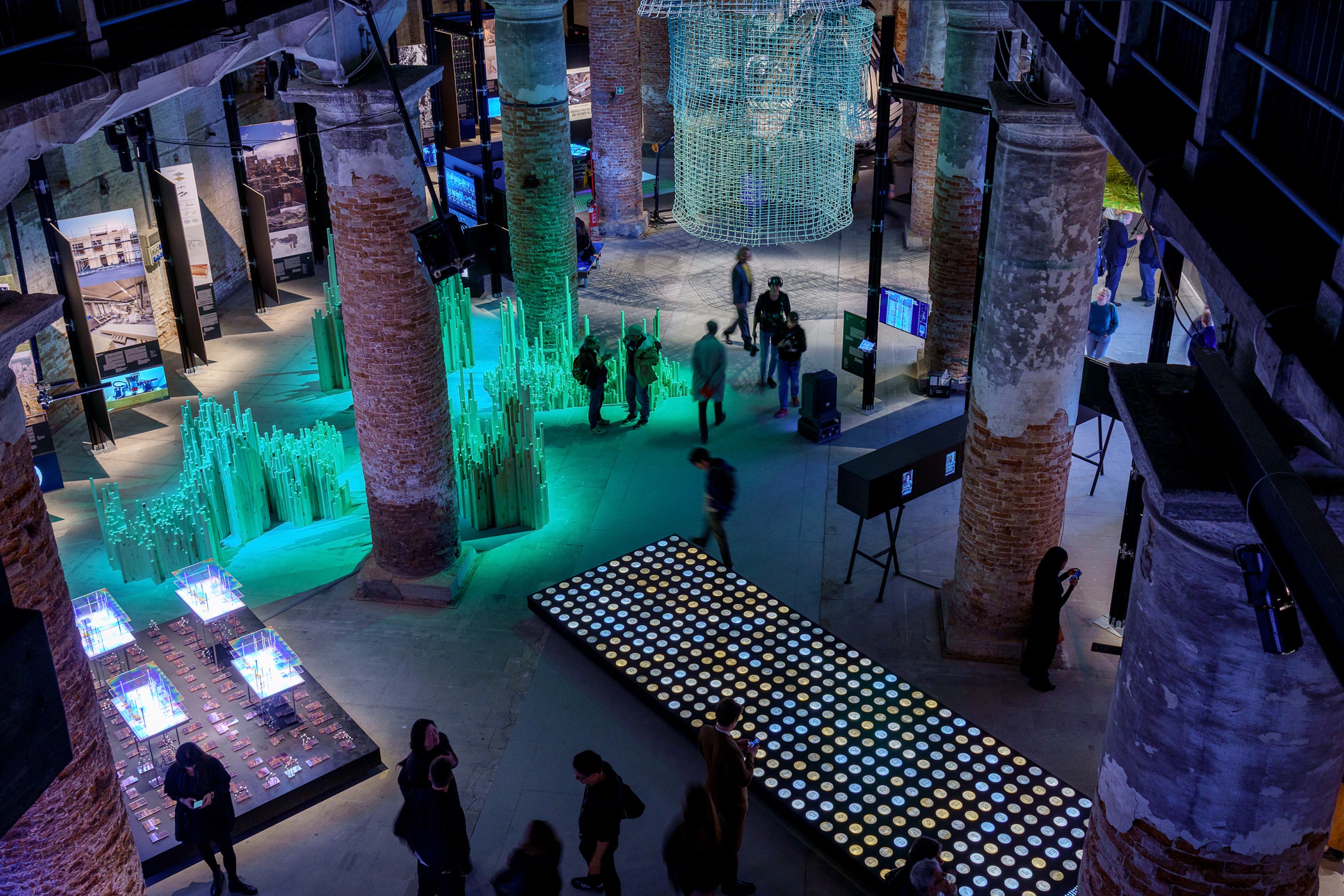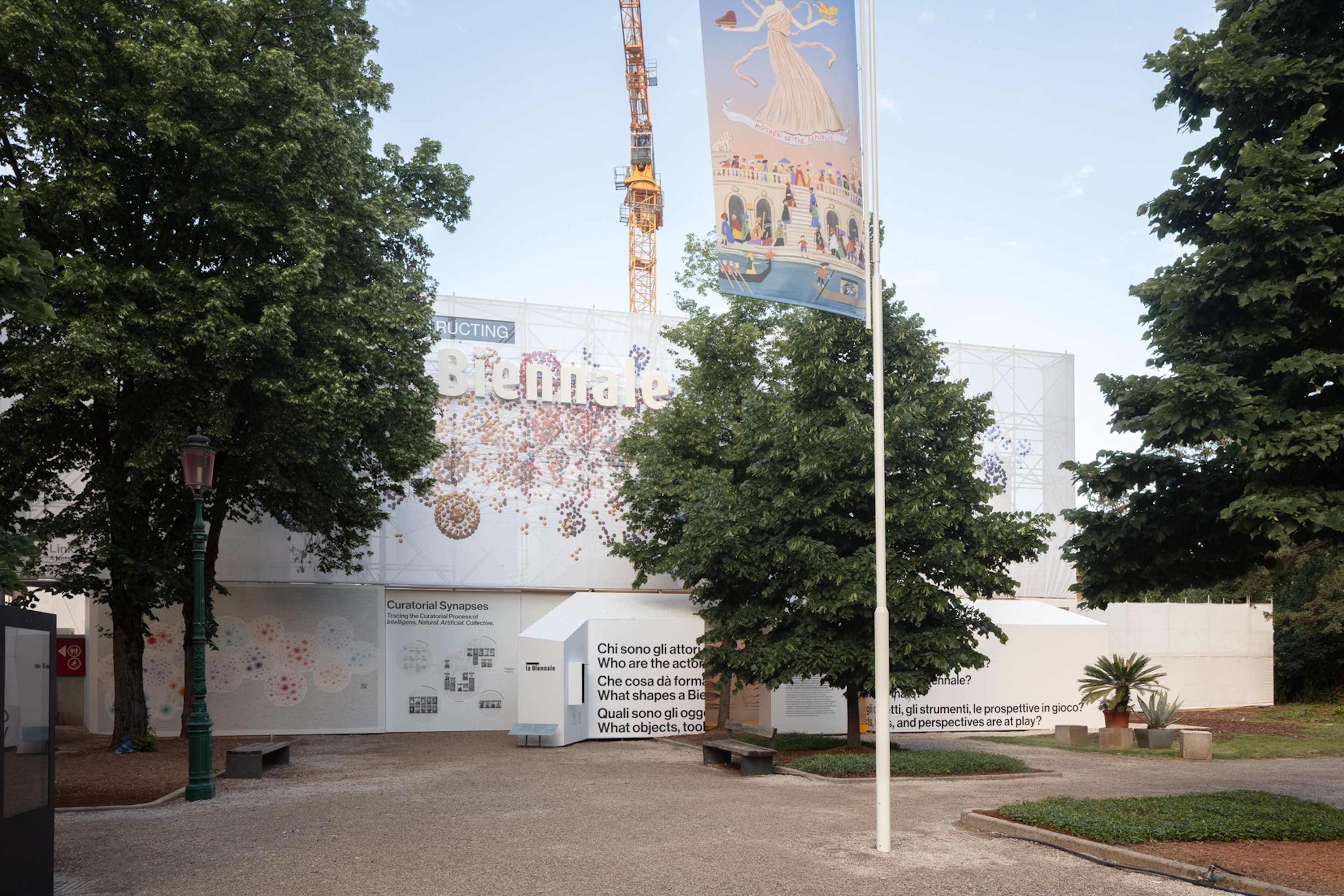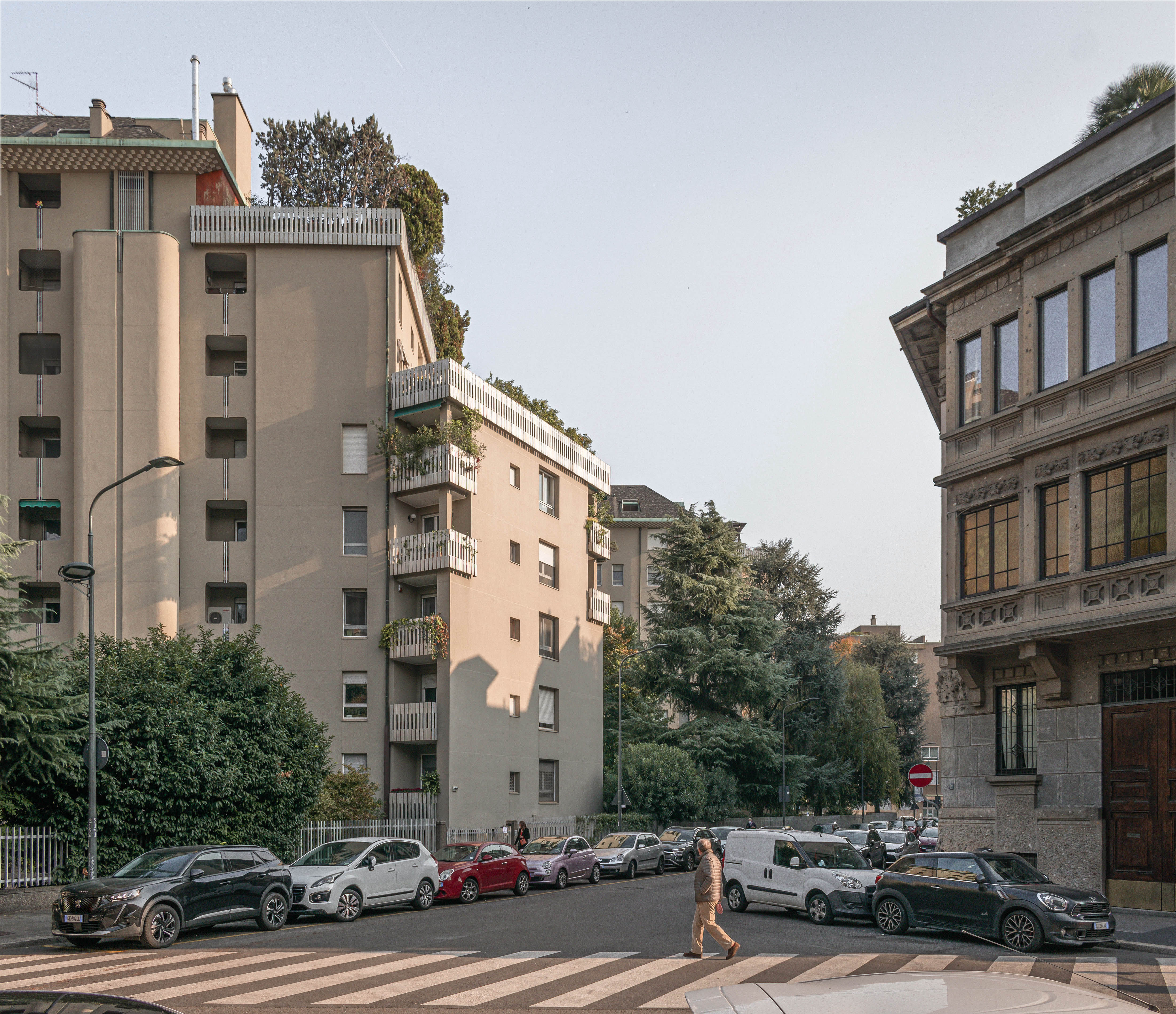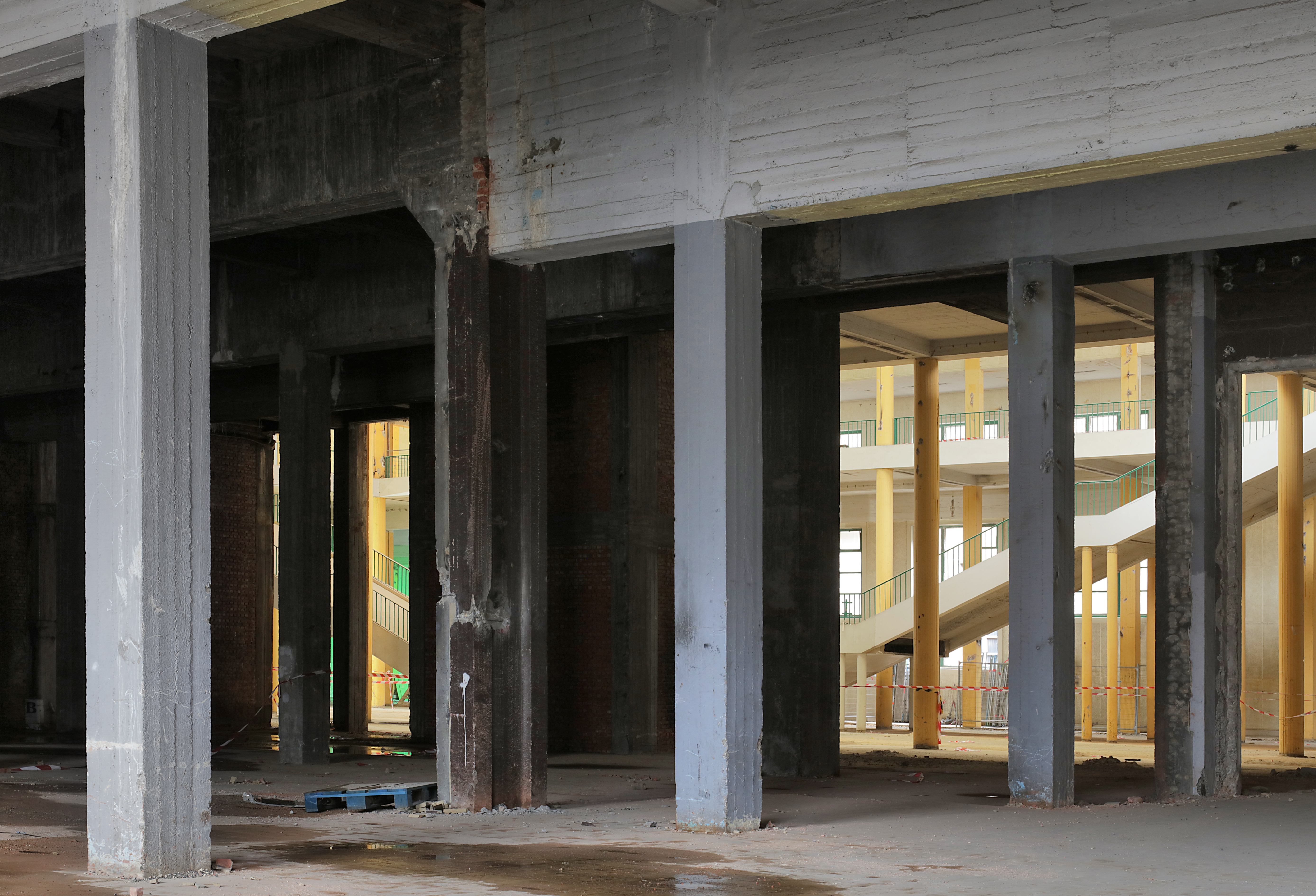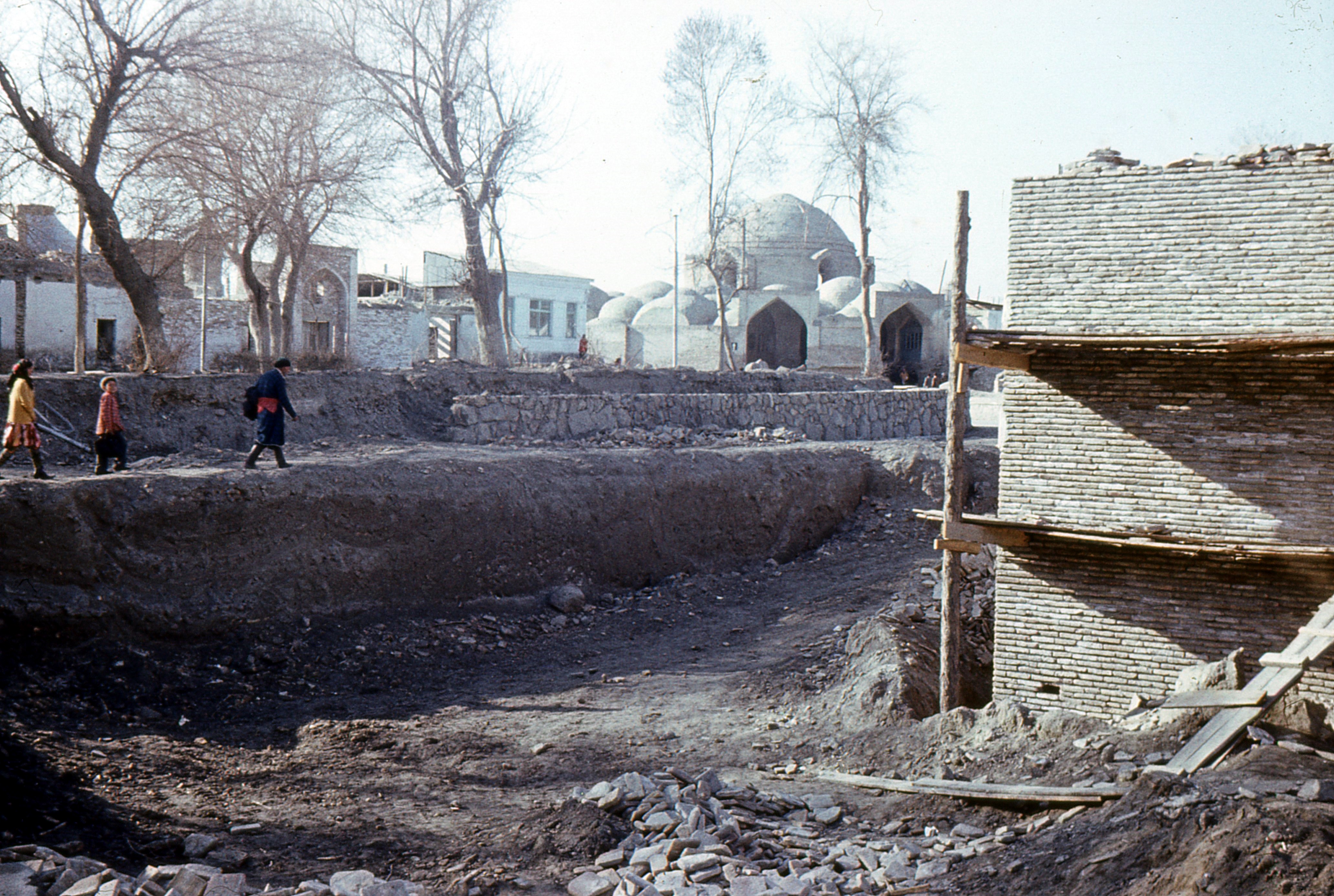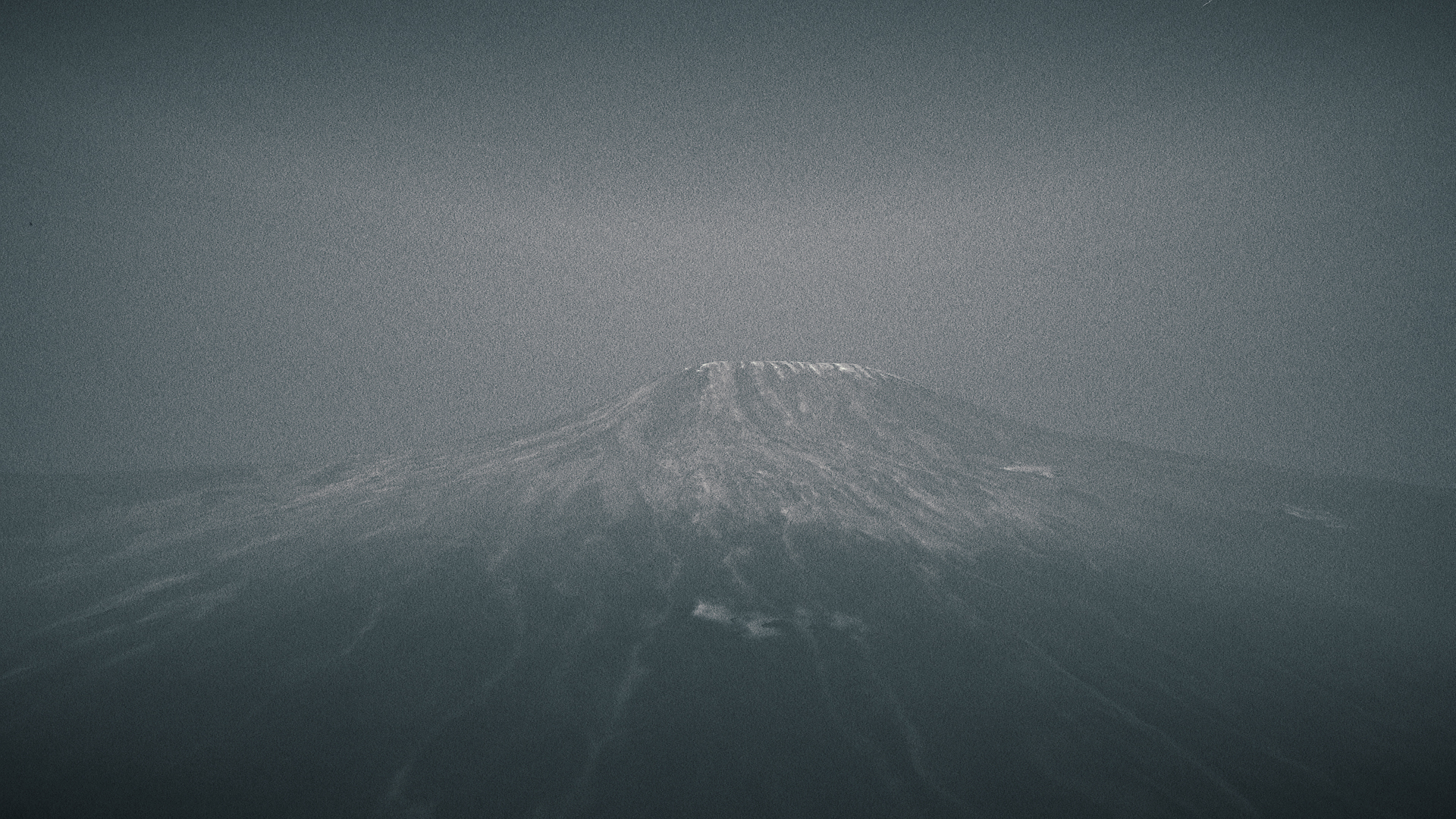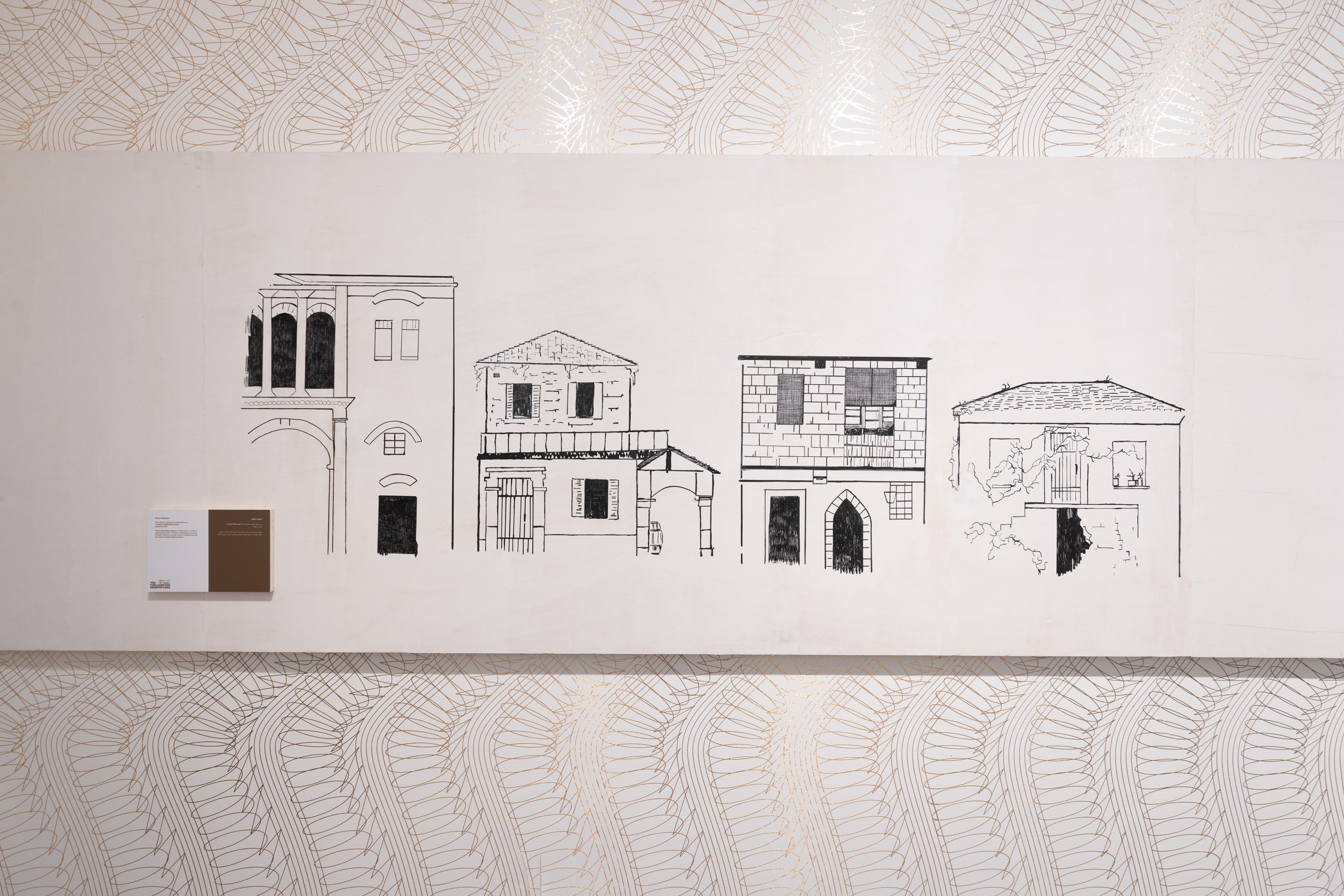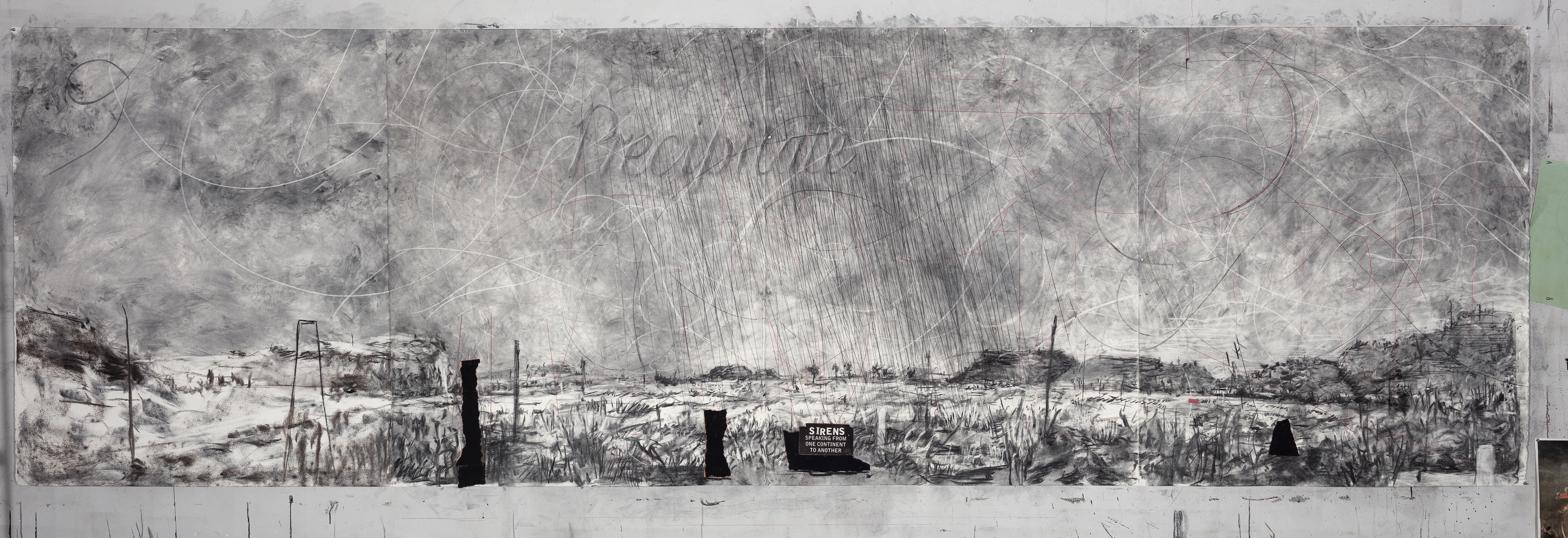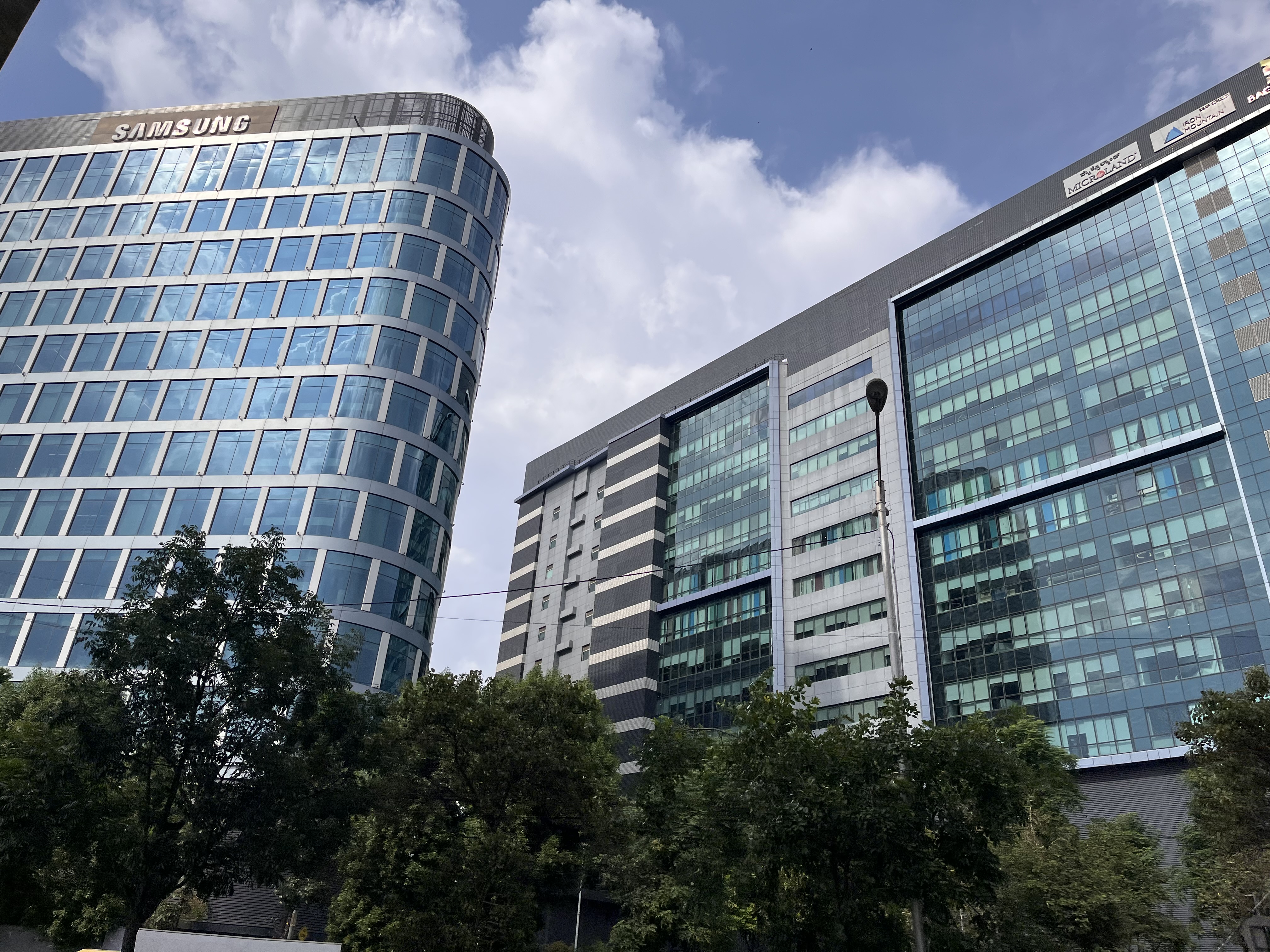May 10–November 23, 2025
The international exhibition of the 19th Venice Architecture Biennale, orchestrated by Italian architect, engineer, and educator Carlo Ratti, opens with a dimly lit room charged by whirring air conditioning units suspended above inky-black pools.1 It’s hot, of course, and reminiscent of the false ceiling installed by Rem Koolhaas, via OMA/AMO, for “Elements of Architecture” at the 14th edition.2 Striving to expose the apparatus of climate-avoidant autonomous architectures, it piques curiosity and sets a compelling tone. Walking out from this room, you feel a chill—the “frontside” of the air conditioners are gushing cool air onto your back.
This introduction foreshadows three things: that “Intelligens. Natural. Artificial. Collective.” will offer no easy path, literally or otherwise; that you will have topsy-turvy access to a myriad of unexpected projections and proposals; and that this is an exhibition replete with profound, sensory experiences. The first is true. The second, partially. The third—most certainly not.
The title is formatted with the gens in “intelligens” underlined. For those of us who might need Latin dictionaries to make sense of this, gens roughly translates as “people” and this portmanteau intends to hint at multiple forms of intelligence required to, in the words of the curator, “experiment beyond today’s limited focus on AI and digital technologies.”3 Unlike the title, and relative to previous iterations, this year’s exhibition has a tighter footprint. The Padiglione Centrale, the 3,500 m2 main exhibition space in the Giardini, is closed for restoration. Where it would normally be split across two venues, “Intelligens.” has therefore been largely limited to the (still vast) Arsenale, and the perceived reduction of space has been answered with hyper-densification. The rooms of the Corderie have been stuffed to bursting, with an unusually high number of participants (more than 750 as part of 300 projects) forced into uncomfortable and often careless adjacencies. This is less an exhibition than a trade fair, a pageant, or a start-up incubator.
The exhibitionary model in Venice is ripe with contradiction, apparent with each edition. How do you make an exhibition this large? Can a curatorial concept extend so far? The exercise of its artistic leader is balancing a clear and graspable vision, cultivating said vision and, ideally, softening it with a degree of humility. This incarnation has sought to experimentally “open up” the curatorial process and construct a so-called “collective intelligence.” To do so, Ratti presided over a string of “salons” that shaped the vision of the show, from Zürich and Mexico City to Dubai and Queenstown.4 In addition, an open call for participants returned an inordinate number of responses for inclusion. In the curator’s own words, this has resulted in “Pritzker Prize winners, former La Biennale di Venezia curators, Nobel laureates, and royal professors appear[ing] alongside emerging architects and researchers.” (What, by the by, is a “royal professor”?) The age-old dilemma of showing people over projects, or projects over people, is present once again.
The tumult of ideas on display leaves the visitor besieged. Productive friction dissipates in a labyrinth of enclosed experiences, in which many participants have—subconsciously or otherwise, and if given the space to do so—constructed their own walled gardens or artistic compounds. Snaking through during the preview days, meeting participants along the way, it became evident that the organization has not been sympathetic to individual works. A descriptive summary written by an unspecified AI—there is one of these ascribed to every text—explains the whole effort as “a dynamic, networked organism.”5 “Intelligens.” undoubtedly feels like a petri dish, yet fails at the curatorial level of nurturing those fragile and fascinating relationships between ideas and the people who hold them, as well as the visitor.
In many ways, the foundations of the project are energetically confused. Where Lesley Lokko in the 18th edition was able succinctly to describe her project as an attempt to reveal the inseparability of “decolonization and decarbonization,” Ratti’s direction bounces between claims around climate emergency, the optimism of architecture, invitations toward systems thinking and adaptation, and the pluralities of intelligence required to allow architecture to become “as flexible and dynamic as the world we are now designing for.”6 While all of this is plainly valid, the mediation outwards—a, if not the, key role of a curator standing on this particular dais—manifests as muddled. The anchor point appears to be anything and everything within this panopticon. There seems to have been a desire to harness the everything of everything, and capture it in a room.
“Intelligens.” is buttressed by a certain optimism that discourse around architecture has, in recent times and in a European context, been inclined to surrender. It is to be expected: the prowess and possibility of architecture has risen and fallen through periods of hope and confidence. Our current moment is not a particularly buoyant one. Nevertheless, a need to pivot away from architecture’s navel-gazing tendencies towards, as Ratti puts it, “mitigation” in response to the climate crisis, does necessitate a more liberal embrace of a broader range of collaborations and know-how.
It is correct to say that a good portion of the projects and practices present in the exhibition are indeed experts at this multipronged approach, from Marina Tabassum Architects’s Khudi Bari (2020–ongoing)—a moveable house system designed to withstand water disasters, currently being used in Bangladesh—to Boonserm Premthada’s Elephant Chapel (2025)—a gravity-defying arched structure built from bricks made from elephant dung, awarded a Special Mention.7 The latter takes the form of an experimental pavilion with real-world implications that are haptically present. The former suffers from its display at the edge of the room, printed on boards and positioned above eye level. Although rigorous and important work is present throughout the exhibition, many of the most sophisticated ideas are swept to the side and manifest as wall hangings. Seek and you shall find.
When a curatorial method begins to wane, exhibition architecture can clarify the underlying narrative. The scenography that holds the “data” of the show is a system of profiles that redresses the salty, crumbling brickwork of the Arsenale with sleek and subtle column-like interventions, featuring knobbly growths. In an interview for the New York Times, Niklas Bildstein Zaar of sub (short for “subliminal operations”), the architects of “Intelligens.” describes it all as a “big fractal organism.”8 Although this creature is complicit in the great overwhelm, it does serve to ameliorate the near-debilitating demands that the curatorial framework compels. This subliminal system does what it has been designed to do.
An app developed by sub named Spatial Intelligens—occupying an ethereal realm between the “content” on the exhibition and its scenography, and which this writer has not had the opportunity to test—will be available to visitors. It is understood as an AI companion, analyzing the ways in which people move through the exhibition to build that resonant and elusive “collective intelligence.” More investment might have been made in negotiating the exhibition’s own spatial awareness: too much of a visitor’s concentration must be placed on where or where not to step, which curtain to unfurl, or whether this caption relates to that work. Once you capitulate to any confusion and seek out somewhere to rest, you’re unlikely to find a place to sit unless it’s associated with a work. Even then, most film works, for instance, require you to stand to attention.
Despite the current closure of the Padiglione Centrale, “Intelligens.” has one tentacle—titled “Constructing la Biennale”—in the Giardini. Around the protective hoarding of the building, vitrines house vacuum-packed objects of apparent importance: notes from curatorial meetings, sketchbooks by curatorial assistants, and sticky notes—“FOLLOW UP ON MONEY,” reads one. Across the way, diagrams map themes and relationalities, the colossal list of contributors, and how they seem to seamlessly connect. This exhibition about the exhibition discloses a cardinal flaw: that transparency in modes and models of gathering and display does not necessarily allow for a generous curatorial project, nor one capable of making room for architecture beyond its representation as data or surface. Swamping the visitor in the name of “openness” does not amount to a successful experiment in exhibition-making. Despite its ambition, the maximalist web of “Intelligens” too often appears to lose grasp of its own well-spun threads.
This room presents two installations: Terms and Conditions, by Transsolar, Bilge Kobas, Daniel A. Barber, and Sonia Seneviratne; and The Third Paradise Perspective by Fondazione Pistoletto Cittadellarte, both 2025.
See “Venice Biennale 2014: Elements of Architecture,” OMA, https://www.oma.com/projects/elements-of-architecture. In the exhibition catalog for the present edition, the curator states how they were inspired by Koolhaas’s approach in creating a thematic coherence between the national participations and the main exhibition. Carlo Ratti, ed., Intelligens. Natural. Artificial. Collective. (Milan: Silavana, 2025), 29.
“Biennale Architettura 2025: Intelligens. Natural. Artificial. Collective.,” La Biennale di Venezia, May 10, 2025, https://www.labiennale.org/en/news/biennale-architettura-2025-intelligens-natural-artificial-collective.
Ratti, Intelligens., 26.
The full AI summary reads: “A dual installation-research project visualizes the Biennale Architettura as a dynamic, networked organism. Using data science, ethnography, and visual tools, it reveals the curation process’s invisible negotiations, infrastructure, and sociocultural complexities.”
Ratti, Intelligens., 26.
“The Awards of the Biennale Architettura 2025,” La Biennale di Venezia, May 10, 2025, https://www.labiennale.org/en/news/awards-biennale-architettura-2025.
Thomas Rogers, “A Touch of Apocalypse Chic at the Venice Architecture Biennale,” New York Times, May 2, 2025, https://www.nytimes.com/2025/05/02/arts/design/sub-venice-architecture-biennale.html.
